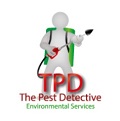Identifying Woodworm & Tips To Avoid It
The severity of woodworm cannot be underestimated, it can cause irreparable damage to the structure of properties and if left untreated it can mean costly repairs and at best ruin furniture, so it’s important to know the signs.

How to identify woodworm
There are a number of tell tale signs that you should look out for at your property which could be signs of woodworm and if you notice any of the below then you should take action fast in order to safeguard your property.
Ruts in the wood
Tunnels or ruts in wood are a tell-tale sign of woodworm larvae which is boring through the wood. These tunnels are also known as galleries
Bore Dust
Woodworm beetles leave bore dust when emerging from timber. This is also known as frass.
Weak / Damaged Wood
Crumbling wood is the sign of a serious infestation, it’s most commonly seen on floorboards or around the corners / edges of joists
Fresh Exit Holes
Holes can be found all year round, but are particularly prevalent during summer months between May and October. If you find these in your property seek advice and assistance from a pest control expert fast.
Woodworm Larvae
Also known as wood grub these are creamy-white in colour and curved in shape. It’s not common to find these in your property but woodworm larvae is a worrying sign.
Eggs
These are often difficult to spot, but in extreme circumstances, eggs can be found at the property – in this instance, seek the support of an expert immediately.
Live Adult Beetles
It’s possible that you may see woodworm beetles, they are often visible when they come out of the woodwork looking to mate. You may see them emerge from timbers in the summer months (usually between May and October)
Dead Beetles
If you see dead beetles in your property then this is a tell-tale sign of woodworm as some adult beetles can’t escape the property and will then die.
Tips to avoid woodworm at your property
While we (or other) pest control experts will happily come out and assist and treat any signs of woodworm, by the time you get to this point there could already be some fairly serious damage at your property. You may have wet and dry rot, both of which will require treatment.
It’s not always easy to deal with woodworm, therefore, we’d advise that you look at ways to ensure you won’t get woodworm at your property. A woodworm infestation can cause serious problems, so it’s best to ensure you avoid it.
1. Humidity – The best advice we can give to anyone is to control the humidity at your property. Woodworm loves moist timber – water will help the woodworm live and grow. If you are able to starve woodworm of water then it’s unlikely you will get to the point of infestation. It’s, therefore, best to keep humidity levels as low as possible through good ventilation, we’d recommend that you consider the use of a dehumidifier if necessary.
2. Timber – If you notice timber is affected by humidity and has become moist then remove it as soon as possible. This will prevent any risk of an infestation. Once woodwork has been treated then it can be reintroduced.
3. Furniture – Ensure that any furniture you do buy is made of high-quality wood. Hardwood is known as being the most resistant to woodworm infestations as it is so dense. You can also treat any timber you do have with a woodworm killer as a preventative treatment.
4. Traps – Consider the use of flytraps, this will catch adult wood boring beetles before they have a chance to mate.
5. Treatment – If you are unlucky and signs of woodworm appear, you must treat the area as soon as possible.
What to do if you have a woodworm
If you have signs of woodworm then we’re sure you’ll be keen to do something about it quickly. Before treating it, it’s important to identify the type of woodworm you’re dealing with correctly. If you are unsure, it’s always best to consult a pest control specialist.
Surface treatments – if the woodworm is only affecting small areas and furniture then it’s likely that you can in fact treat it yourself. Common furniture beetles can be treated with a brush, dip or spray. A Permethrin-based woodworm treatment should be used on all affected timbers. We’d recommend that you also carry out the same treatment on any timbers close by.
Injection treatments – deeper infestations will also require some form of injection treatment on top of the surface treatment. This is done by injecting treatment into the woodworm holes or drilling deep into the affected area and injecting treatment here – a spray or gel can be used. We’d recommend that you check with a professional pest control expert before undertaking this treatment.
Please note that a professional should treat any severe infestations that have caused extensive damage.
Have Any Question!
DON'T HESITATE TO CONTACT US ANY TIME.
Have Questions ?
Call us now
Head Office: 01202 042814
About Pest Detective
We specialize in 23 different kinds of pest, and we're also qualified to handle a much wider range of pest control needs. If you have a pest problem that's not covered in our pest library, be sure to contact us for information about what services we offer for your particular needs.
We are open
on Call
24 hours - 7 days a week
Services
Need support?
Drop us an email
Contact us
Locations
- The Pest Detective - 01202 042814
- Pest Detective Poole - 01202 042814
- Pest Detective Bournemouth - 01202 042814
- Pest Detective Blandford - 01258 395021
- Pest Detective Ringwood - 01425 896029
- Pest Detective Wareham – 01929 498149
- Pest Detective Dorset - 01305 360649
- Pest Detective Dorchester - 01305 360649
PEST DETECTIVE SOCIAL
PEST DETECTIVE SOCIAL
PEST DETECTIVE COVERAGE
Poole: Branksome, Broadstone, Canford Cliffs, Sandbanks,, Charminster, ,Hamworthy, Oakdale, Upton, Westborne, Canford Heath, Parkstone, Penhill, Lytchett Minster, West Parley, West Moors, and Wimborne.
Bournemouth: Ashley Heath, Boscombe, Charminster, Moordown, Kinson, Kings Park, Queens Park, Winton, Ferndown , Southbourne, Meyrick Park, Pokestown, Mudeford ,Verwood, West Parley, West Moors and Highcliffe.
Blandford: Child Oakford, Milton Abbas, Sturminster Marshall, Sturminster Newton, Hazelbury Bryan, Marnhull, Tarrent Hinton, Milborne St Andrew, Witchampton and Wimborne.
Wareham & Swanage: Purbecks, Bere Regis, Bindon Abbey, Corfe castle, Worth Matravers, Moredon and Wool.
Ringwood: West Hampshire, Bransgore, Burley, Fordingbridge, Highcliffe and New Milton.
Dorset: Poole, Bournemouth, Christchurch, Wareham, Swanage, Purbecks, Wimborne, Blandford, Ringwood, Dorchester and Weymouth..
Dorchester & Weymouth: Abbotsbury, Puddletown, Upwey, Portland and Warmwell.
© 2016 The Pest Detective - All Rights Reserved | Site Map | Terms & Conditions | Privacy Policy

